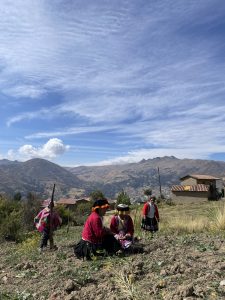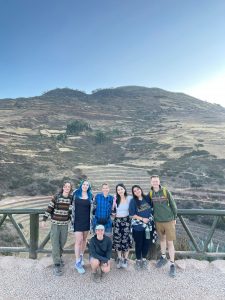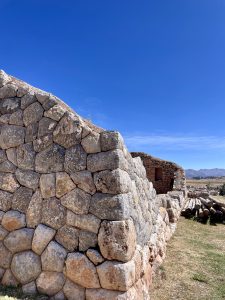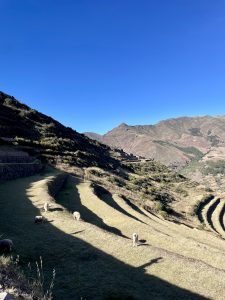How does one, so simple and small as I, sum up a course as great and grand as this one? How does one categorize an experience which was so varied?
Trying to look back and reflect on the course as a whole feels like I’m standing in the middle of a lake and trying to see it all at the same time. When you look in one direction you miss what’s behind you. And when you change directions, you can’t see the previous angle anymore. Eventually you’re left spinning around trying to see it all at the same time but all you see is a blur of it all.
What did I learn or unlearn about Indigeneity over the course of the trip? I felt during the course there were a few “turning points” where my personal views on Indigeneity or how I perceived Indigeneity in Peru were challenged.
>Lima: Peru, as one of the cradles of civilization, has been continuously occupied by different indigenous groups for thousands and thousands of years. The Inca were literally just the tip of the iceberg that the Spanish happened to run their Titanic into.
- The visit to the LUM gave me insight into how complex the continuance of the indigenous identity has been and gave context for modern Peru
- Our visit to the Larco illuminated how long this region of the world has been occupied by advanced civilizations. The Incas are merely the most recent.
>Cusco: As the capital of the Inca Empire, it was obvious in the architecture and culture just how rich of a history the town has.
- We talked a lot about the performance of Indigeneity but passing the ladies working the land along the road to rainbow mountain wearing the same traditional dress that we observed in the plaza or around town encouraged me to “believe” more in the representations we had been seeing.
- The planetarium and Sacsayhuaman were pivotal in understanding just how advanced the Incas were before the Spanish arrived and I felt a sense of loss for the people that built and used these sites.
- The syncretism of Corpus Christi, along with the reading by Dean, made me think more about how Catholicism has adopted and co-opted representations of Indigeneity for its own benefit.
- Inti Raymi was a spectacle of Inca-ness. I found myself weighing what are the pros and cons of commercializing the Inca experience like this. It’s good to preserve the culture and maintain the customs, but it’s so constructed. Although it seemed like it was made for a foreign audience, Dean argues that it actually is mostly for Peruvians nationals and for the construction of a national identity.
>Pisac: The indigenous (here: Andean, specifically Incan) cosmovision is called more aptly “cosmo-vivencia” to emphasize its relevance in the present.
- The Amaru Visit: see related experience blog
- Frequently, trying to explain what we were doing and why we’re on this trip led to complex feelings and unsure explanations. Often I didn’t want to make it sound like “oh I’m here to study “your people””. What does that discomfort reveal? I’m not sure and I’m still figuring it out.
>Sacred Valley: although presented in the way that it is, Indigeneity is not a Monolith
- The tour at Machu Picchu with Roy “this beautiful tourism”. I had never heard someone describe the industry this way. Maybe he was just saying it for us or maybe he really did feel that way about his career. Once again, I feel I’m being sold something and I don’t know how to evaluate its authenticity.
- the “tourist menu” in Aguas Calientes. Biggest mistake of my life.
- The Ollantaytambo tour with John from Las Orquideas. This was one of the most personalized tours we had and I felt like we actually got an insight into a modern Peruvian person’s relationship with Indigeneity. He told us about how his father is one of the few people who knows how to move the large rocks up and down hill, a secret which westerners have spent years figuring out.
Tourism has become the modern Titanic sailing through the polar night. The packaged and presented face of Incan Indigeneity rises above the water but without knowing it, visitors are passing by and potentially encountering many intertwined history’s under the proverbial water of ignorance (and inherent lack of roots/routes).



 The last few days in Pisac I’ve had the opportunity to visit a few different Incan ruins in both Pisac itself and in the surrounding towns. Each time we’ve visited I’m struck by the same awe but also an odd sense of confusion or “inquietud” which is a word I seem to only know in Spanish and I’m not bothered to find out in English because it suits me so well as it is.
The last few days in Pisac I’ve had the opportunity to visit a few different Incan ruins in both Pisac itself and in the surrounding towns. Each time we’ve visited I’m struck by the same awe but also an odd sense of confusion or “inquietud” which is a word I seem to only know in Spanish and I’m not bothered to find out in English because it suits me so well as it is.